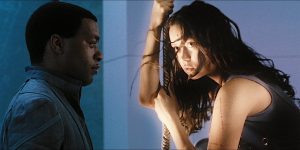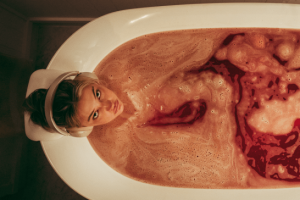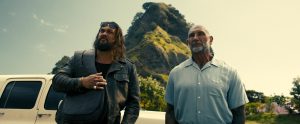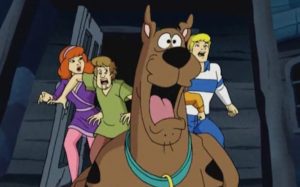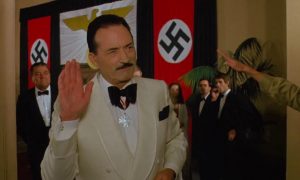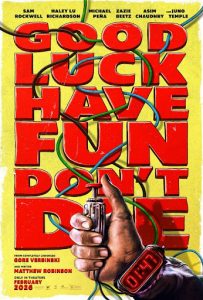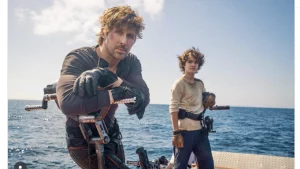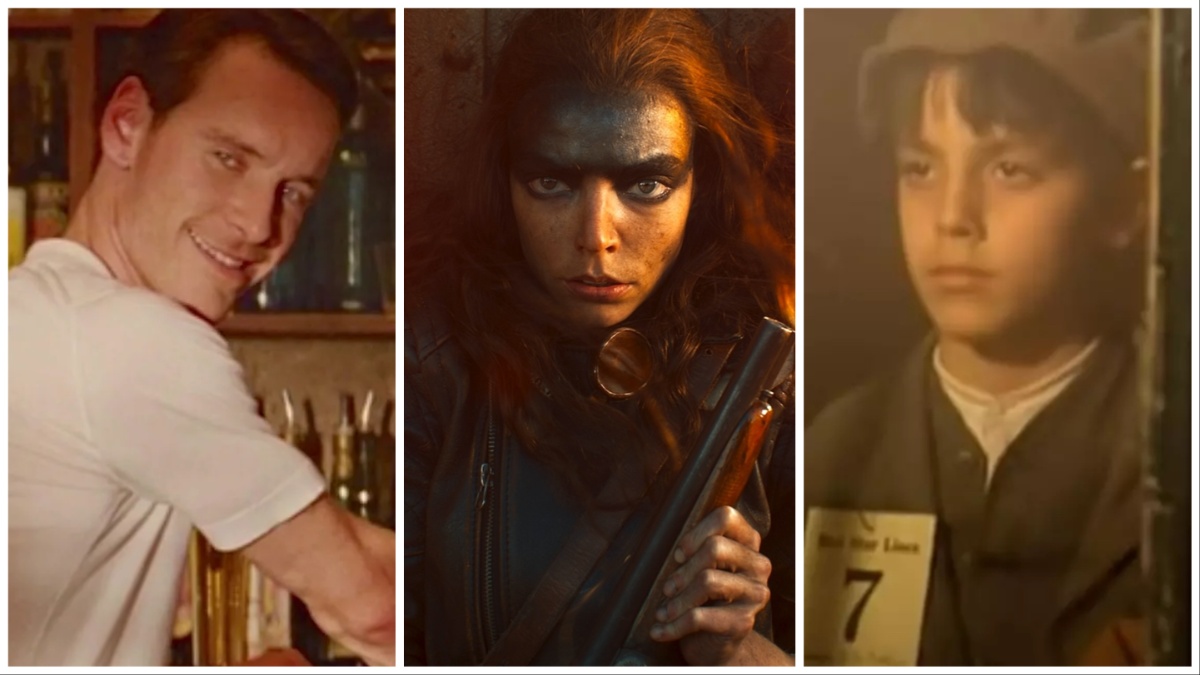
“You always attack a movie scene as late as you possibly can. You always come into the scene at the last possible moment.” This bit of advice from the great screenwriter William Goldman has guided most moviemakers. The overwhelming majority of films begin with trouble already brewing and end before everything can be settled. But sometimes, a filmmaker takes the opposite approach. These visionaries begin as early as possible, even after the opening of a different movie. Thus, the prequel was born.
Seriously though, most prequels come less from the minds of creatives and more from studios trying to milk every dollar from their sweet, sweet IP. For that reason, audiences have rightly developed a general skepticism toward the concept. But every once in a while, a genuinely talented filmmaker finds value in telling the story before the story. They use the plot beats we already know to give their story a tragic tone or to even set up a surprising twist.
15. The First Omen (2024)
Let’s be honest, the actual first Omen from 1976 is a bit dull; an obvious knock off of The Exorcist that not even Richard Donner’s direction could make worthwhile. So it doesn’t take too much to outdo that film. Director Arkasha Stevenson doesn’t use that low bar as an excuse to phone things in. Instead she and her co-writers Tim Smith and Keith Thomas pull out all the stops, making The First Omen the first good movie in the franchise.
Nell Tiger Free stars as novitiate Margaret, who uncovers a conspiracy within the Catholic Church that involves the coming of the Antichrist. On a plot level, The First Omen includes some compelling commentary about religion and politics alongside nods to franchise lore. But its real appeal is Stevenson’s confident direction, which transforms a pulpy horror film into something visually stunning.
14. Saw X (2023)
The Saw franchise offers simple pleasures: lots of gore, anti-copaganda (usually), and a twisty storyline with more drama than the average soap opera. Thanks to that tangled storyline, Saw X isn’t the first prequel in the series. After all, John Kramer dies at the end of Saw III yet stays an ongoing concern in the story for many of the direct “sequels.”
However, Saw X is the most dedicated prequel in the franchise, as director Kevin Greutert, and writers Peter Goldfinger and Josh Stolberg, set the story between the first Saw and Saw II. The great Tobin Bell returns as Kramer, whose hopes for an experimental treatment gets dashed by scammers, setting him on a mission of revenge with his apprentice Amanda (Shawnee Smith) in tow. Saw X sometimes veers too much into making Kramer a hero, but it offers the goods in terms of convincing gore and drama.
13. Infernal Affairs II (2003)
Most American viewers know 2002’s Infernal Affairs as the inspiration for Martin Scorsese‘s The Departed. Directed by Andy Lau and Alan Mak and written by Mak and Felix Chong, Infernal Affairs follows Triad gangster Lau Kin-ming (Lau) pretending to be a cop while cadet Chan Wing-yan (Tony Leung) goes undercover to spy on the mob.
For the prequel Infernal Affairs II, Edison Chen steps in as a younger Lau Kin-ming while Shawn Yue plays Chan Wing-yan. These replacements don’t have the presence of Lau and Leung, and Infernal Affairs II sometimes gets lost in an over-complicated plot. However, Lau and Mak remain behind the camera, ensuring that the action and tension remain in place.
12. The Hunger Games: The Ballad of Songbirds & Snakes (2023)
The Hunger Games seems exactly like the type of franchise that would pursue an unnecessary prequel to generate IP profits. After all, the series broke the final book into two films in hopes of doubling revenues. However, director Francis Lawrence and author Suzanne Collins proved everyone wrong with a worthy film that stood on its own.
Based on Collins’ unexpected prequel novel of the same name, The Hunger Games: The Ballad of Songbirds & Snakes goes back to an earlier production of the games, which fleshes out the world and sets up a romance between future dictator Coriolanus Snow (Tom Blyth) and tribute Lucy Gray Baird (Rachel Zegler). The true delight of the film comes from the big, fun performances, including Viola Davis as scenery-devouring gamemnaker/mad scientist Dr. Volumnia Gaul and Zegler playing Lucy Gray like she’s Rogue from X-Men: The Animated Series.
11. Prometheus (2012)
When Ridley Scott returned to the Alien saga he originally guided, fan expectations went through the roof. After the terrible Alien vs. Predator entries and the uneven Alien: Resurrection, fans hoped that Scott would return the franchise to its respectable glory. But then they got scientists making dumb decisions and Guy Pearce in unconvincing old man make-up.
While those problems certainly exist it’s also true that Scott had more in mind for Prometheus than just setting up Alien. The film asks big questions about God and humanity, themes not even touched upon in previous franchise entries. Furthermore, it might be the most gorgeous movie that Scott ever made, thanks to striking cinematography from Dariusz Wolski. It’s a beautiful looking movie filled with big ideas, and a few unforgettable moments like when Noomi Rapace must perform an abortion on herself, and just everything that Michael Fassbender is doing. It does not fulfill its potential, but what a fascinating miss.
10. The First Purge (2018)
The Purge has never been a subtle franchise, as it’s based on the ridiculous idea that crime is legalized for 24 hours each year. But subtle is overrated, especially when fascism was on the literal march again during the Trump years. The First Purge dives right into the political milieu of the era while reviewing the origin of the ridiculous central concept.
Directed by Gerard McMurray and written by franchise creator James DeMonaco, The First Purge reveals the no-crime period to be a plot by right wing politicians to wipe out the lower classes. The film focuses on crime kingpin Dmitri Cimber (Y’lan Noel), who goes from profiting on his community to protecting it from those who embrace the Purge. The First Purge has a righteous anger that overcomes any shortcomings in the script, making it an exhilarating watch.
9. Escape, Conquest, and Battle for the Planet of the Apes (1971 – 1973)
Although many fans see the current Planet of the Apes franchise as prequels to the original film from 1968, the dots haven’t been connected clearly enough yet to confirm that. Furthermore, the original series has its own great prequels in the low budget but fun final three entries, released between 1971 and 1973.
After the 1970 sequel Beneath the Planet of the Apes ended with the planet blowing up, 1971’s Escape from the Planet of the Apes follows chimps Cornelius (Roddy McDowall), Zira (Kim Hunter), and Dr. Milo (Sal Mineo) back to the ’70s. There, they go from celebrities to fugitives as humans react to the threat of Ape Supremacy. Escape and the two movies that follow, Conquest of the Planet of the Apes and Battle for the Planet of the Apes, struggle to match the scale of their ideas. But fans of ambitious, low-budget sci-fi cannot deny their appeal.
8. X-Men: First Class (2011)
On one hand, X-Men: First Class breaks the timeline of the Fox X-Men movies in a way that mirrors the comics and irritates fans. On the other, First Class works as a fun action movie with great performances from James McAvoy as a young, swinging Charles Xavier circa groovy 1962 and and Michael Fassbender as a Magneto who never seemed cooler (or more dangerous) than when he’s hunting down Nazis with the ruthlessness and swagger of Sean Connery’s 007. Director Matthew Vaughn hits a high he’ll never reach again and Kevin Bacon hams it up as Sebastian Shaw.
The movie certainly isn’t perfect. The death of Darwin (Edi Gathegi), a mutant whose whole thing is adapting to any threat, is the most egregious example of the Black guy dying first, and Rose Byrne is wasted as Moira MacTaggert. But First Class has enough energy and gumption to restart the X-Men franchise after the dire X-Men: The Last Stand derailed it.
7. Monsters University (2013)
Give or take a Toy Story, Pixar has been hit or miss with continuations of its films, and Monsters University certainly didn’t seem like the one to break the trend. After all, why would kids who loved the industrial comedy of the first film get into a frat comedy inspired by Animal House? Director Dan Scanlon and his co-writers Daniel Gerson and Robert L. Baird answer that question by using the start of the first film to tell a surprisingly realistic story for a kids’ movie.
As established in 2001’s Monsters, Inc., Mike Wazowski (Billy Crystal) supports the talented scarer Sully (John Goodman), but isn’t a scarer himself. In Monsters University, Mike dreams of becoming a scarer and works hard to achieve that goal, something that the privileged Sully takes as a given. In between the wonderful shenanigans that ensue, Monsters University reminds children that dreams don’t come true and life isn’t fair, the exact opposite of Disney’s usual feel-good messaging.
6. Ouija: Origin of Evil (2018)
Despite its banal scares and non-existent characters, 2014’s board game adaptation of Ouija was a full in hit for Universal, earning $103.6 million on an $8 million budget. So it makes sense that the studio would return to the well to eke out some more profit. But instead of a cheap cash-in, they got a rich, soulful, character-driven film with some outstanding monologues via Ouija: Origin of Evil.
The incredible jump in quality can be attributed to the director Mike Flanagan, who co-wrote the script with Jeff Howard. On a plot level, Origin of Evil involves a sham psychic whose daughter invites an evil spirit in by way of the titular board game. With a solid cast that includes Flanagan regulars Elizabeth Reaser, Henry Thomas, and Kate Siegel, and with great young performances from Annalise Basso and Lulu Wilson, Ouija exceeds the first film and expectations.
5. Indiana Jones and the Temple of Doom (1984)
Before the dismal Kingdom of the Crystal Skull and Dial of Destiny, Indiana Jones and the Temple of Doom was the most divisive adventure mounted by the titular teacher/archaeologist. Many different aspects put off viewers, including Kate Capshaw’s shrill take on leading lady Willie Scott and the movie’s overt colonialist racism. For many, however, Temple of Doom had a nasty streak that mitigated its most problematic sequences. More than any other Indy film outside of Raiders of the Lost Ark, this thing’s action sequences just rip.
Behind the scenes drama involving divorces and breakups account for some of the darker tone in Temple of Doom. But the movie is also a prequel, which features a younger and more selfish version of Indy. Whatever the reason, Temple of Doom isn’t all, uh, doom and gloom. The movie opens with some of Steven Spielberg’s best work, and the mine cart sequence is an all-timer.
4. Final Destination 5 (2011)
For most of its runtime, Final Destination 5 doesn’t feel like a prequel to the original film from 2000, nor does it need to be a prequel. Coming off the dire The Final Destination, Final Destination 5 returns the series to its past glory, thanks to some of the most inventive and stomach-churning kills in horror history. Director Steven Quale and screenwriter Eric Heisserer make the most of their cast of affable young adults, all on a company trip instead of the usual teens, and masterfully constructs their kill sequences.
But in its closing moments (SPOILERS HERE), the would-be survivors think that they’ve escaped Death’s trap. Then they board a plane trip, one they’ll share with a bunch of obnoxious teens, played by Devon Sawa and Seann William Scott. At that moment, viewers realize that the Final Destination 5 characters are boarding the plane that explodes in the first film, which only solidifies the franchise’s themes about inescapable fate.
3. Furiosa: A Mad Max Saga (2024)
Don’t let the disappointing box office receipts fool you. Furiosa: A Mad Max Saga is still a George Miller film where he returns to the world he created in Mad Mad: Fury Road. Furiosa tells the story of the title character, with Anya Taylor-Joy and Alyla Browne stepping in for Charlize Theron, who originated the Imperator in Fury Road. The film strips away the rigid exterior that Theron constructed in that movie though, reframing her actions from the later movie as a heroic rejoinder to the harshness of the Wasteland.
Beyond the title character, Furiosa features everything one would expect from a Miller action epic. Although more deliberately paced than Fury Road, Furiosa is filled with outstanding, thrilling set pieces, including another amazing War Rig sequence. Even better, Furiosa finds Chris Hemsworth unlocking the character actor weirdo only hinted at in his Marvel performances, upsetting viewers with his false nose and bleeding nipples.
2. Twin Peaks: Fire Walk With Me (1992)
Twin Peaks: Fire Walk With Me declares its intention in the opening shot. The film begins with an image of a hammer shattering a static-filled television screen, letting everyone know that this is a movie, not the cult television show that ran for two seasons on ABC. It’s an important warning, as writer and director David Lynch, working with co-writer Robert Engels instead of Twin Peaks co-creator Mark Frost, ignores most of the characters from the show, even limiting FBI Special Agent Dale Cooper to a short prologue.
Instead Fire Walk With Me focuses on the last week in the life of Laura Palmer, the doomed teen whose death sets off the show. The series Twin Peaks treats Laura as an object of fascination, who wavers between angel and whore, depending on who’s talking about her. Fire Walk With Me allows Laura to speak for herself, revealing that she’s both angel and whore, and so much more. Anchored by an amazing and raw performance from Sheryl Lee, Fire Walk With Me uses its end point as a tragic close that transforms Laura into a real person instead of a victim.
1. The Godfather, Part II (1974)
The Godfather ends on one of the most perfect shots in cinema history, as Kay (and we the viewers) watch the door closing on Michael Corleone, cementing his position as the new Godfather. The Godfather, Part II rather miraculously though still found a credible way to continue that story. It shows Michael’s further descent as he puts his mark on the family. But, perhaps much to viewers’ surprise in 1974, the best parts of the follow-up turned out to be how the picture contrasted Michael’s declining reign to the rise of his father Vito at the turn of the century, portrayed here by Robert De Niro.
Francis Ford Coppola and co-writer Mario Puzo achieve this grace by tracing Vito’s arrival in the U.S. and the resistance that he and other Italian immigrants faced in a bygone era of New York City history. De Niro wisely resists the impulse to impersonate Marlon Brando, only scratching his chin a few times and not overselling his line, “I’ll make him an offer he can’t refuse.” Instead De Niro creates a new and admirable character, adding another layer to Michael’s tragedy. The film is both arguably the best sequel and prequel ever made.
The post The Best Prequels Ever Made appeared first on Den of Geek.
